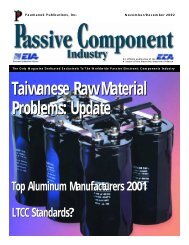LTU-LIC-0603-SE
LTU-LIC-0603-SE
LTU-LIC-0603-SE
You also want an ePaper? Increase the reach of your titles
YUMPU automatically turns print PDFs into web optimized ePapers that Google loves.
CONTACT ANGLES ON THE RUNNING SURFACES OF CROSS-<br />
COUNTRY SKIS *<br />
L. KUZMIN AND M. TINNSTEN<br />
Dept. of Engineering, Physics and Mathematics, Mid Sweden University,<br />
Teknikhuset (Q), Plan 3, Akademigatan 1,<br />
<strong>SE</strong>-831 25 Östersund, Sweden<br />
Fax:+46 (63) 16 55 00<br />
E-mail: leonid.kuzmin@miun.se<br />
The importance of high hydrophobicity for minimising snow-ski friction has<br />
been discussed in a number of scientific papers. The chemical modification of<br />
surface forces using fluoropolymeric coatings can result in water contact angles<br />
of up to 120°, but not more. To reach extreme values of the contact angle, a<br />
second factor has to be modified, namely surface structure. In this study a<br />
number of cross-country skis were treated with a modern method of stone<br />
grinding and with old-fashioned steel scraping. The surface roughness (3D) and<br />
the surface (solid-liquid) contact angle were then measured. After this, the skis<br />
were treated with a hot glide wax and new measurements were made. This<br />
study also examines the contact angles (solid-liquid) of the flowed surface of a<br />
sample of glide wax and the surface of a sample of solid press-sintered running<br />
base (UHMWPE). Unexpectedly low hydrophobicity was observed after stone<br />
grinding.<br />
Keywords: Hydrophobicity, skis, roughness.<br />
1. Introduction<br />
Skiers have always been interested in attaining a better glide on skis, but there<br />
has been considerable uncertainty about the basic model to be used. Today there<br />
is much evidence to support the idea of meltwater lubrication.<br />
Colbeck [1] considered two different mechanisms for removing water from<br />
the ski-snow contact surface. Using the squeeze mechanism, the thickness (h) of<br />
4 2 2 2<br />
the film would be in balance: h 3 cr u /2Li<br />
where c is the ratio of area to<br />
load, r is the contact radius between the snow and the ski,is the viscosity of<br />
water, u is speed, L is the latent heat of fusion and i<br />
is the density of ice. Using<br />
2<br />
the shear mechanism, the thickness would be much less: h u r/ Li<br />
Obviously, a smooth, hydrophobic ski base would make a shear waterremoval<br />
mechanism less effective. Water slides more readily on hydrophobic<br />
* This study is partly financed by the European Union.<br />
1



